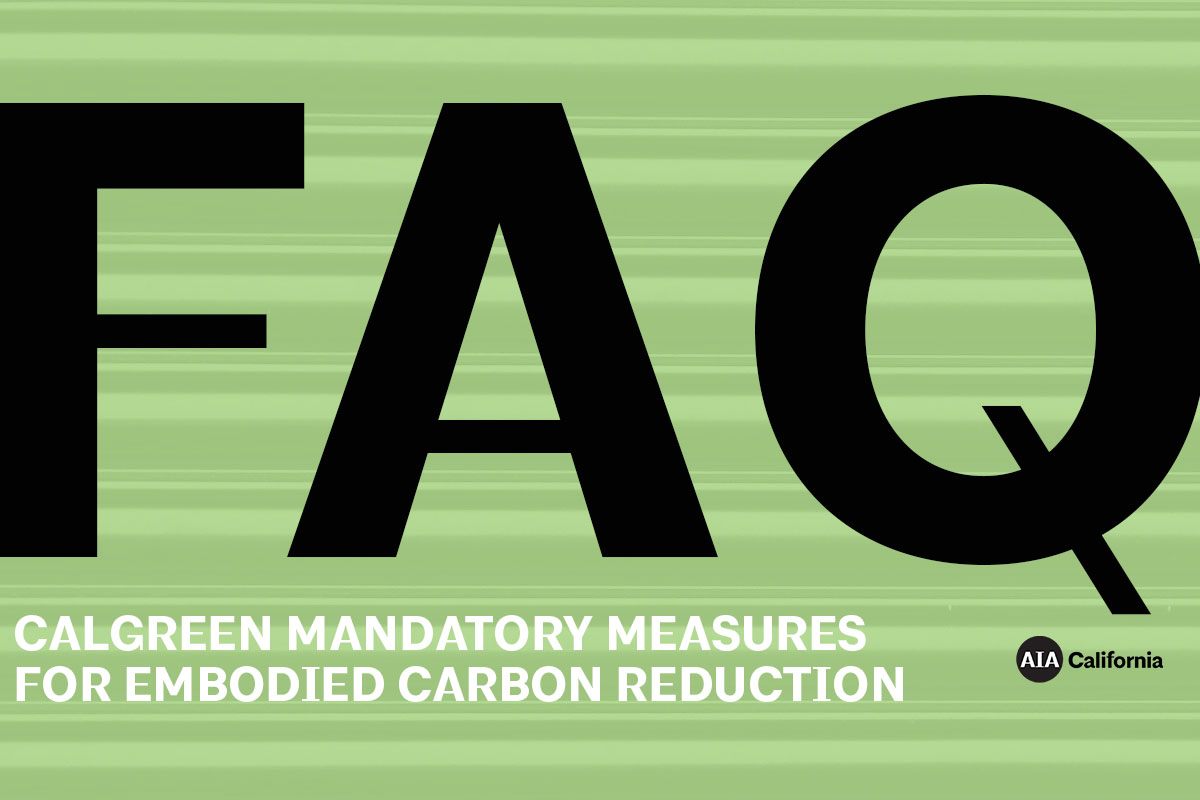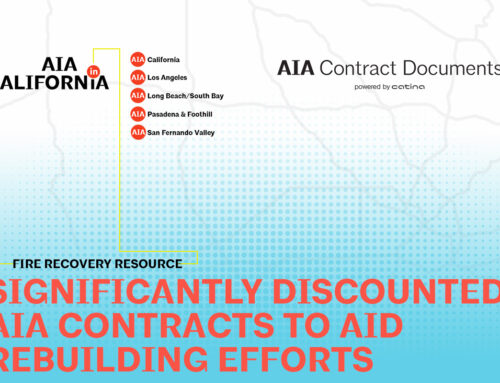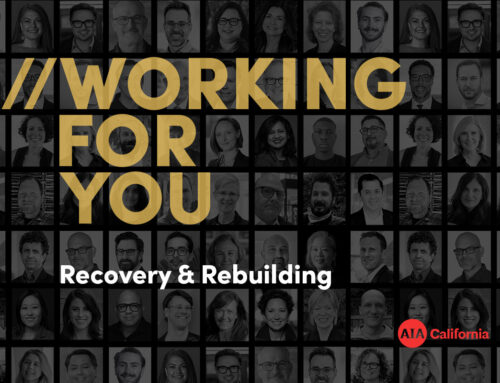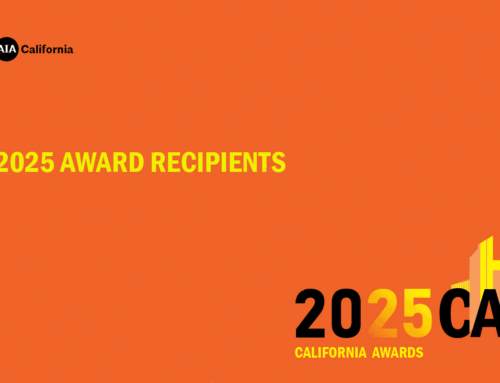CALGreen Update Frequently Asked Questions //byline Michael Malinowski, FAIA September 5, 2023 Download the FAQ Just days after the earth’s hottest month in recorded history1, on August 2, 2023, California
The post CALGreen Mandatory Measures for Embodied Carbon Reduction first appeared on AIA California.
CALGreen Mandatory Measures for Embodied Carbon Reduction
Frequently Asked Questions
Just days after the earth’s hottest month in recorded history1, on August 2, 2023, California became the first state in the country to make Embodied Carbon Emission Control a mandatory part of the building code. This FAQ provides a brief overview of these requirements for architects and others who shape California’s built environment.
1. What is Embodied Carbon and why is it important?
Embodied Green House Gas Emissions, aka Embodied Carbon2, are the emissions that occur from materials and construction activity. Buildings are a significant source of greenhouse gas pollution, with about 40% of annual global CO2 emissions via building operations (27%) and embodied carbon (13%).3 Most embodied carbon emissions occur very early in the life of a building, so they are particularly important when considering California’s adopted climate goals of 40% carbon emission reductions by 2030 and carbon neutrality by 2045. Studies show that even high-performing new buildings can take from 20 to up to 80 years to recoup in operational carbon savings the embodied carbon impacts of their original construction.4 While California has been a global leader in reducing operational carbon emissions via our energy code, embodied carbon emission control has not progressed as much.
2. What are the requirements, and where will they be located in the code?
These measures will be included in the 2022 Intervening Cycle updates to the California Green Building Standards Code (CALGreen) Part 11, Title 24, to be effective July 1, 2024 statewide. Nonresidential commercial building projects over 100,000 square feet and school building projects over 50,000 square feet will be required to comply with one of three pathways:
Building Reuse: Reuse at least 45% of an existing structure and exterior. When reuse is combined with new construction, the total addition area using this pathway is limited to double the area of the existing structure. Section 5.105.2Performance: Complete a whole building lifecycle assessment (WBLCA) demonstrating 10% lower embodied carbon emission than a baseline project design Section 5.409.2Prescriptive: Document environmental product declarations (EPDs) for listed materials (steel, glass, mineral wool, concrete) that are on average lower than a specified threshold of global warming potential. Section 5.409.3
3. Why is California making these changes now? What are the expected impacts?
California has been a national leader in reducing energy use via our energy code – and that energy use reduction aligns closely with lower operational carbon emissions. Embodied Carbon emissions reductions have not moved as fast for these reasons among others:
Embodied Carbon can be harder to understand and measure than energy use.Embodied carbon emissions reductions are not necessarily related to reduced operational costs like operational carbon reductions are.The building code best suited to address embodied carbon is CALGreen since it addresses materials. Materials are the main drivers of embodied carbon emissions via their production, transportation, installation, maintenance, demolition, recycling and disposal. Basic terminology about embodied carbon emissions was needed as part of the changes.Decisions that impact a project’s embodied carbon emission tend to happen very early in the process of project delivery. Examples include: how much to build, what to save, and what materials to work with. These questions can be more difficult to influence than those that occur later in the design process.
The Buy Clean California Act and voluntary aspirational standards like LEED have been addressing embodied carbon, but these only touch a small number of projects. To affect most projects, and shift culture and habit, requires basic code applicability. The actual ‘metrics’ in terms of carbon reduction of this advancement are important – quite variable by project but overall estimated to be at least 10% – but a more important outcome of this advance is the shift needed to make considering these embodied emissions part of ‘business as usual’.
By implementing this flexible set of easy to comply with standards, applicable only to a few large projects that tend to have highly skilled design teams – California moves embodied carbon into the mainstream while minimizing potential business disruption or significant cost. The framework added to CALGreen is the foundation for future progress in the built environment toward California’s carbon-free future.
By way of example, California’s constantly evolving advanced energy codes have over time created a marketplace where nearly every building project today has energy performance modeled by software – even small residential remodels. This modeling is now routine, easy, cost-effective and very impactful. When we reach that same point in our consideration of both operational and embodied greenhouse gas emissions from our built environment, we will be well on the way to achieving our states mandated climate objectives.
4. What kinds of architectural project will these measures apply to?
These measures will apply to new construction, alterations, and additions to commercial buildings over 100,000 sf. that fall under the purview of the California Building Standards Commission (CBSC). On January 1, 2026, this square footage threshold will drop to 50,000 sf The measures also apply to school projects over 50,000 sf that fall under the purview of the Division of the State Architect (DSA).
These requirements will be applicable for subject projects submitted for building permits after July 1, 2024.
These measures currently are not adopted by Office of Statewide Health Planning and Development (OSHPD) so they are not applicable to building types such as hospitals that fall under their authority. They will also not be applicable to the residential occupancies that are subject to the Department of Housing and Community Development (HCD)5.
5. Will these measures ban certain materials?
No, there are no banned materials. While the Prescriptive path limits material choices to those that are less than 175% of industry average global warming potential, even those poor performing materials could be used in a project under the Performance compliance path as the analysis allows balancing poor GWP performing materials with high GWP performing materials. Note also that Concrete – absent from the Buy Clean California Act framework at the time these requirements were developed – was given a weighted average approach to allow high performance / high GWP concrete to be offset with low GWP concrete (flatwork for example).
6. Why will most building reuse/retrofit projects be compliant?
Most building reuse, alteration, and addition projects will meet the 45% standard. Note also that addition projects, which do not meet the 45% rule, or those where addition areas are more than double the existing building area, the Performance or Prescriptive paths for compliance are still available.
7. Will most new building project require a Whole Building Life Cycle Assessment to comply?
No, any project can use the Prescriptive path, which simply limits material choices to those that are below 175% of industry averages. For any given material this threshold only eliminates a very small number of choices, and compliant alternatives are readily available.
8. Will large building projects require specialized consultants to document and manage compliance with new CALGreen provisions?
No, specialized consultants are not mandated by these measures. For many projects that work with existing buildings, compliance documentation will consist of a simple table that documents percentage of existing elements saved. For projects that use the Prescriptive approach, there are literally thousands of product EPD’s readily available, and compliance paperwork is very simple. For those projects using Performance compliance via WBLCA, the tools and resources required for compliance are widely available, including no-cost software. For the larger buildings affected by these requirements, design teams will in many cases already be familiar with the terminology and tools, due to their experience with LEED and other standards.
For all paths, training will be forthcoming in the coming months both from AIA CA and other sources. It is also possible for design teams to elect to use consultants for compliance; and these types of consulting services are readily available.
9. Where did the concepts, terms, limits and other elements of these requirements come from?
These new requirements are steps forward that build on many things that are already in place. For example:
The Buy Clean California Act, adopted in 2017, is the source for the EPD requirements; with the exception of concrete.The concrete Prescriptive measures were developed with the collaboration and cooperation of the concrete industry, and with reference to the 2019 Marin County low carbon concrete codeWhole Building Life Cycle Assessment and Building Reuse concepts were already in CALGreen as voluntary measures.There has been considerable use in California and around the country of voluntary green building frameworks, like US Green Building Council LEED, which references the same concepts, metrics and approaches. Key staff of USGBC participated in the code development process, which helped insure consistency with established protocols, tools, resources and metrics.
Engagement in the code development process including a wide range of subject matter experts, such as the Carbon Leadership Forum, the Rocky Mountain Institute, The New Building Institute, Architecture 2030, the Natural Resources Defense Council, the Decarbonization Coalition, the American Institute of Architects, etc. These organizations, along with many other stakeholder entities, participated in the CALGreen Carbon Reduction Collaborative hearings and workshops.
In sum, these measures are the result of many inputs, eyes, perspectives, precedents, and established protocols and best practice knowledge.
10. How will these requirements affect building project cost and feasibility?
The standards being implemented are easy to achieve using readily available materials and methodologies. For example, the Prescriptive method allows use of products that have greenhouse gas emission impacts up to 175% of industry-wide average EPDs – so the limits would only preclude a very small number of the most highly greenhouse gas polluting products, for which there are many less impactful options readily available in the current marketplace.
The multiple compliance paths allow project proponents to select the path with the smallest impact on any particular project. Because of the small number of projects that will meet the initial square footage thresholds, and the ease in meeting the standards applicable to each path, the overall cost and feasibility impacts for the building industry will be minimal to none.
11. Where can I find the new code language?
Amendments to CALGreen from the 2022 Intervening cycle will be published and distributed by the International Code Council as part of their normal update process. The so called ‘green sheets’ are sent to all current code owners as updates.
The specific code language that taken together comprises the new ‘Embodied Carbon Mandatory Measures’ is integrated into the existing structure of the 2022 CALGreen. For this reason, the text is not ‘all in ‘one place’ but rather it spreads over several chapters and sections of the Code. The changes include new definitions, new compliance worksheets, new referenced standards, and new voluntary tiers. All the changes are currently on the California Building Standard Commission website, along with the other documents related to their development, vetting, comments, and refinement, online here: https://www.dgs.ca.gov/BSC/Rulemaking/2022-Intervening-Cycle .
For those wishing to collate all the material, the author of this FAQ has posted an outline of the process that can be used to assemble the final language here: http://appliedarts.net/theappliedarchitect/?p=645
12. Do these code updates include CALGreen Tiers that can be voluntarily adopted by cities and counties to advance their own carbon reduction and climate action plans?
Yes, the updated CALGreen will include Tier 1 and Tier 2 requirements that will be available for local jurisdictions to voluntarily adopt. There are a number of advantages inherent in the unique tier system of CALGreen:
The tiers serve to ‘predict the future, i.e. where things are headedThe use of CALGreen’s tier framework to support local reach codes increases consistency across the state, while also lowering costs and efforts required for adoption, application by design professionals, construction requirements to insure compliance, and interpretation and enforcement by local building departments.Requirements in tiers are subject to the same broad stakeholder vetting, subject matter expert review, and coordination for integration into California’s regulatory system as all other state level codes in our state.
13. Is there a graphic that can help summarize these requirements?
Yes
For those wishing to be added to our list for notification when additional information and training are available from AIA California, please send your email to Sarah Vasquez here: svasquez@aiacalifornia.org
1 NASA https://www.nasa.gov/press-release/nasa-clocks-july-2023-as-hottest-month-on-record-ever-since-1880
2 Carbon Leadership Forum https://carbonleadershipforum.org/embodied-carbon-101/
3 Architecture2030 https://architecture2030.org/2030_challenges/embodied/
4 Preservation Green Lab https://cdn.savingplaces.org/2023/05/24/11/14/36/697/The_Greenest_Building_Full.pdf
5 AIA California has submitted a Code Change Petition requesting HCD adoption of these measures for
the 2025 Code (effective January 1, 2026), to be considered in upcoming code development process.
The post CALGreen Mandatory Measures for Embodied Carbon Reduction first appeared on AIA California.
AIA CaliforniaRead More






